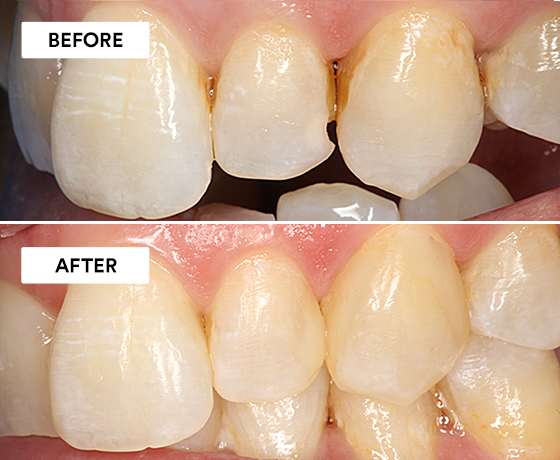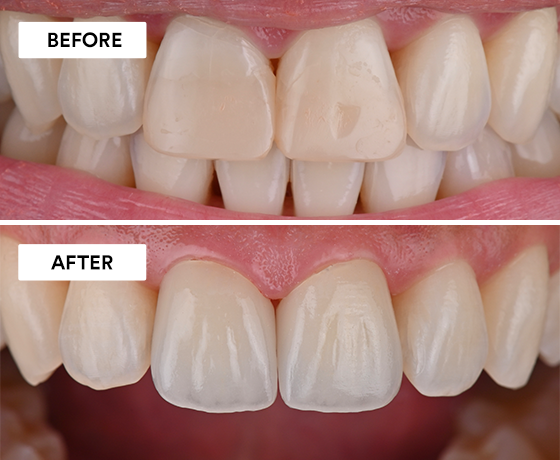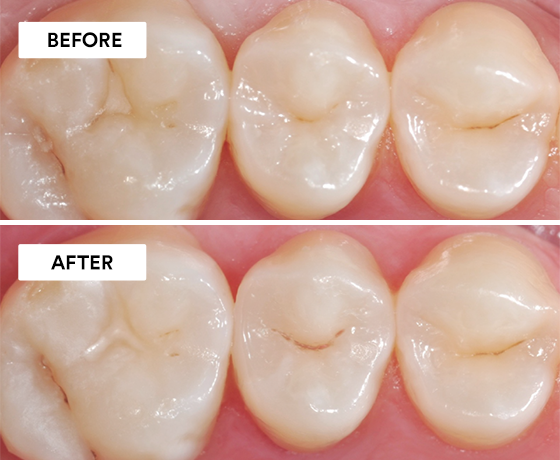Clinical Case: Is it possible to do more with less? Cracking the chameleon effect
Using 3M™ Filtek™ Easy Match Universal Restorative.


Running a successful practice can be stressful. Learn why you should do what you love more often – so you can love what you do. Learn more about “Success simplified”
Let’s face it: being a dentist can be stressful. From unscheduled patients that disrupt your agenda and a lack of qualified dental assistants, to demanding patients with presumable expert knowledge from the internet and increasing administrative work and regulatory requirements – running a dental office can be overwhelming for your whole team.1 No wonder every fifth dentist feels burned out at least once a week, and more than half feel that way at least once a month, based on a recent research among US and European dentists. 2
A little love for work goes a long way
How to deal with stress at work? One conventional approach, which is becoming more and more relevant especially for younger generations at the start of their careers, is developing a solid work-life-balance.3 However, experts argue that while flexible working hours and meditation rooms at work are a positive thing, they don’t seem to help reduce stress levels in high stress work environments.4
Based on research among general physicians5, there is another overlooked factor that could greatly reduce the risk of burnout: the percentage of working time that you spend doings things that you really love. This goes beyond the higher purpose of a profession, like impacting patients’ lives as a doctor. Instead, this means the specific activities that you enjoy so much that you lose track of time doing them, and you can’t wait to do again when you’re finished. This may sound like a lot to expect from a job, but according to the research, there is no need to feel this way about all of your tasks at work. Rather, spending as little as 20% of your working time performing tasks that you really enjoy might be enough to significantly reduce the risk of burn-out.
Which of your daily tasks do you really love, and how much time do you spend on them?
The first step towards less stress is to ask yourself which activities in your daily practice you deeply enjoy. We have asked dentists this question and, as you would expect, received a very broad range of answers. They vary from singing for pediatric patients during the treatment to performing complex surgery like tooth extractions, implant placement or periodontal surgery. 1,2
No matter what the answers are for you personally, the next question should be: How can I perform these activities more often? Unfortunately, the answer isn’t straightforward. Factors out of your control, such as the type of treatment a patient needs or the administrative or regulatory requirements of your practice, can limit how often you get to do your favorite tasks. However, data indicates that one controllable approach might help increase enjoyable work time: standardization (see Fig. 1). By standardization, we mean the development and implementation of clearly defined processes for each team members’ tasks.

Standardization can help improve the quality of the final outcomes, e.g. the fit of crown that you receive from your lab, thereby reducing how much time you spend on painful corrective procedures like crown adjustments or remakes. 6 After all, no matter how different or similar the favorite tasks of different dentists are, nobody really loves trouble shooting while the patient waits for their restoration!
How to efficiently standardize complex dental procedures
Standardization is most helpful for complex processes like prosthodontic workflows, but can be challenging due to the number of variables involved. Making a single crown includes a minimum of 60 steps and decision processes.7 Statistically speaking, each additional step increases the spread of expected results – and the risk of deviating from the desired outcome (see Fig. 2).

Such complexity can theoretically be controlled through sophisticated quality management systems like Six Sigma, which tend to be used by big corporations. However, for most dental offices, this approach might be a little extreme and come with the risk of overwhelming the whole team.
A more efficient approach would be to blend the two basic principles: standardization, or removing process defects; and simplification, or reducing complexity (which Leonardo da Vinci called “the ultimate sophistication”). In other words, simplifying reduces the number of variables to a manageable level in order to standardize the most critical process steps – enabling consistent, high-quality outcomes.

Get it right the first time – every time!
The approach above represents the basic principles of “Success simplified”, a collaboration program between 3M and a group of international experts from the clinical and scientific arena. It addresses the increasing complexity in the dental market with clinical guidelines aimed at simplification and standardization. The goal is to give clinicians guidance for improved indication-specific material selection, tips for their efficient and successful use, as well as simple tools that help standardize the indirect restoration workflow.
Here are some ideas from the program to help standardize in a simple way:
Learn more about “Success simplified”
Keep in mind that changing habits and established processes can be a challenging task, even if your entire team agrees to change. The temptation to keep things the way they have always been and “muddle through” the consequences can be overwhelming. If you are struggling with this, ask your team (and if necessary, yourself): how much of your working time do you spend doing things you really love, and is this enough? The answer might reveal the ideal starting point to simplify your success.
Sources:
1 3M internal qualitative research, 2019
2 3M initiated research among 600 dentists, 2019
3 Deloitte Millenial Survey 2016
https://www2.deloitte.com/content/dam/Deloitte/global/Documents/About-Deloitte/gx-millenial-survey-2016-exec-summary.pdf
4 Marcus Buckingham, Ashley Goodall: Nine Lies about Work. A Freethinking Leader’s Guide to the Real World, 2019 https://www.marcusbuckingham.com/rwtb/lie-8/
5Mayo clinic proceedings, Sept 2019 – Changes in Burnout and Satisfaction With Work-Life Integration in Physicians and the General US Working Population Between 2011 and 2017
https://www.mayoclinicproceedings.org/article/S0025-6196(18)30938-8/abstract
6Bernd Wöstmann in 3M Impression Compendium, 2019
7Reinhard Marxkors: Lehrbuch der zahnärztlichen Prothetik, 2007

Using 3M™ Filtek™ Easy Match Universal Restorative.

Using 3M™ Imprint™ 4 Light VPS Material, 3M™ Intra-oral Syringe, 3M™ Imprint™ 4 Heavy VPS Material, 3M™ Protemp™ 4 Temporization…

Using 3M™ Scotchbond™ Universal Etchant, 3M™ Scotchbond™ Universal Adhesive, 3M™ Elipar™ DeepCure-S LED Curing Light, 3M™ Filtek™ One Bulk Fill…